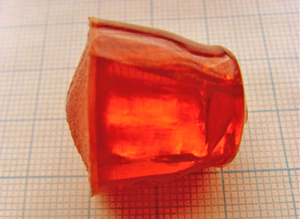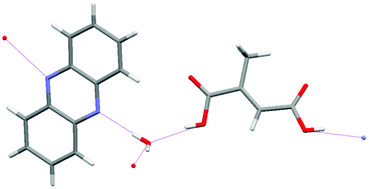Guanidinium-based synthons are useful for building ordered supramolecular structures due to their large number of charge-assisted hydrogen bonds (the guanidinium cation has 6 active H bonds). However, due to this plethora of potential intermolecular interactions, it can be a tricky to predict and design resultant structures – which is what crystal engineering is all about…
In their latest CrystEngComm Communication, Yadav and Gorbitz have endeavoured to restrict the modes of hydrogen bonding by substituting with TBD (see below). TBD has only 2 N-H donors which is much more manageable for these purposes! They partnered the TBD with dicarboxylic acid, 2,2′-bipyridine-5,5′ dicarboxylic acid (BPDA) to form a 2:1 complex. Additional acceptor sites at the carboxylate lone pairs means that 4 water molecules can co-crystallise along with the structure, leading to extended water channels or open organic networks containing clusters of water.
Read more now…
A supramolecular 2:1 guanidinium–carboxylate based building block for generation of water channels and clusters in organic materials
Vitthal N. Yadav and Carl Henrik Görbitz
CrystEngComm, 2013, DOI: 10.1039/C2CE26572A














